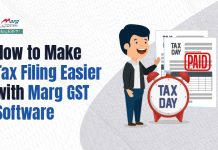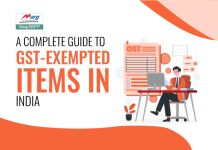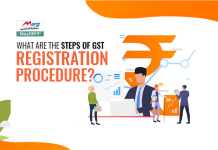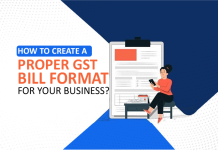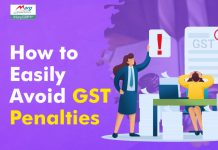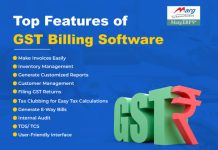Introduction:
In the realm of Goods and Services Tax (GST) in India, businesses are required to fulfill various compliance obligations to ensure smooth operations and seamless tax administration. One such compliance requirement is the filing of various GST returns, including GSTR-8A. In this blog post, we will delve into the details of GSTR-8A, its significance, and how businesses can efficiently comply with this return.
What is GSTR-8A?
GSTR-8A is a GST return that needs to be filed by e-commerce operators or aggregators who are registered under the GST law. It is an auto-generated return that reflects the details of supplies made through e-commerce platforms by e-commerce operators. This return serves as a means to capture the transactions undertaken by the e-commerce operator and facilitate effective tax administration.
Key Features of GSTR-8A:
- Supplier Information: GSTR-8A captures the details of suppliers who have made supplies through the e-commerce operator during a specific tax period. It includes information such as the name of the supplier, their GSTIN (Goods and Services Tax Identification Number), and the aggregate value of supplies made.
- Tax Liability Determination: GSTR-8A also helps in calculating the tax liability of the e-commerce operator. The return provides information about the tax collected by the e-commerce operator on behalf of the suppliers, thereby aiding in the accurate determination of the tax liability.
- Input Tax Credit (ITC): E-commerce operators can claim input tax credit on the supplies made to them by the suppliers. GSTR-8A captures the ITC details, allowing the e-commerce operator to claim the eligible credit while filing subsequent returns.
- Auto-generation and Amendment: GSTR-8A is auto-generated based on the information furnished in GSTR-8, which is filed by the e-commerce operator. However, if any changes or modifications are required, the e-commerce operator has the provision to make amendments in GSTR-8A before the due date.
Important Points to Consider:
- Filing Frequency: GSTR-8A needs to be filed on a monthly basis by the 10th of the following month. For instance, the return for the month of May should be filed by June 10th.
- Supplier Responsibility: It is crucial for suppliers to provide accurate details to the e-commerce operator. Any discrepancies or incorrect information provided by the supplier may impact the accuracy of GSTR-8A and subsequent compliance.
- Timely Reconciliation: E-commerce operators must reconcile the supplies made by the suppliers with the data available in GSTR-8A. Timely reconciliation helps in identifying any discrepancies, rectifying errors, and ensuring accurate compliance.
- Late Filing Penalties: Failure to file GSTR-8A within the stipulated due date may attract penalties and interest charges. It is essential to adhere to the deadlines to avoid any unnecessary financial implications.
Conclusion:
GSTR-8A plays a vital role in the GST compliance ecosystem for e-commerce operators in India. It enables the seamless reporting of supplies made through e-commerce platforms and aids in accurate tax liability determination. By understanding the key features and complying with the filing requirements, businesses can ensure smooth operations, maintain transparency, and avoid penalties.
As the GST framework evolves, it is essential for businesses to stay updated with the latest guidelines and regulations to fulfill their compliance obligations effectively. Regularly consulting with tax professionals or accessing official government resources can provide valuable insights and guidance for businesses navigating the complex GST landscape.
Read more useful content:
- GST Rules and Regulations in India
- GST Software
- GST Billing Software
- Billing Software
- GST on diamonds
- Making GST Payments
- GST E-invoice
Frequently Asked Questions (FAQs)
Q1: Who needs to file GSTR-8A?
A1: GSTR-8A needs to be filed by e-commerce operators or aggregators who are registered under the Goods and Services Tax (GST) law in India.
Q2: What is the purpose of filing GSTR-8A?
A2: The purpose of filing GSTR-8A is to capture and report the details of supplies made through e-commerce platforms by the e-commerce operator. It helps in determining the tax liability and enables effective tax administration.
Q3: How often should GSTR-8A be filed?
A3: GSTR-8A needs to be filed on a monthly basis. It should be filed by the 10th of the following month. For example, the return for the month of May should be filed by June 10th.
Q4: Can I make amendments to GSTR-8A after filing?
A4: Yes, you can make amendments to GSTR-8A before the due date. If any changes or modifications are required, you can rectify the details provided in the return.
Q5: What information is required to file GSTR-8A?
A5: To file GSTR-8A, you need to provide details of the suppliers who have made supplies through your e-commerce platform during the tax period. This includes the supplier’s name, GSTIN, and the aggregate value of supplies made.
Q6: How is tax liability determined in GSTR-8A?
A6: Tax liability in GSTR-8A is determined by calculating the tax collected by the e-commerce operator on behalf of the suppliers. The return reflects the details of the tax collected, which aids in accurate tax liability determination.
Q7: Can I claim Input Tax Credit (ITC) in GSTR-8A?
A7: Yes, e-commerce operators can claim Input Tax Credit on the supplies made to them by the suppliers. GSTR-8A captures the ITC details, allowing the operator to claim eligible credit in subsequent returns.
Q8: What happens if I fail to file GSTR-8A on time?
A8: Failure to file GSTR-8A within the due date may attract penalties and interest charges. It is crucial to adhere to the filing deadlines to avoid any unnecessary financial implications.
Q9: Can I file GSTR-8A for multiple tax periods at once?
A9: No, GSTR-8A needs to be filed separately for each tax period. You cannot file returns for multiple periods in a single filing.
Q10: Where can I find more information and assistance regarding GSTR-8A?
A10: For more information and assistance regarding GSTR-8A, you can refer to the official GST portal (gst.gov.in) or consult with tax professionals who are well-versed in GST compliance. The official resources provide comprehensive guidance on the filing process and any updates to the regulations.












